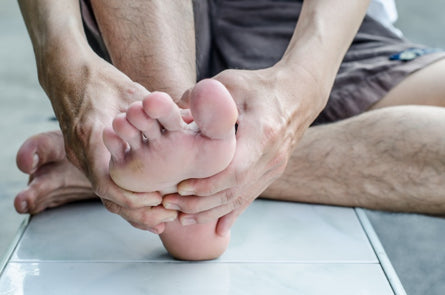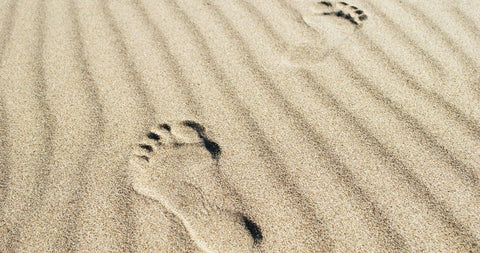
How To Stop Athlete’s Foot In Its Tracks
How to stop athlete’s foot in its tracks
If you spend a lot of time in the gym, the swimming pool or your trainers, you may be no stranger to athlete’s foot. The fungus that causes the condition thrives in humid, dark and warm conditions. In this article, we look at what athlete’s foot is and how to target the first signs of infection and treat it effectively.
What is athlete's foot?
Athlete's foot, or tinea pedis, is one of the most common fungal infections in adults. Several fungus types can cause it, and some of them already live on healthy skin but do not become a problem until they multiply. The fungus usually starts out in the area between the toes and then spreads. The condition commonly results in itching and burning, as well as cracking and peeling of the skin.1
What causes athlete’s foot?
Fungal infections are very contagious and can be spread through direct and indirect contact: Direct skin-to-skin contact and indirect contact whereby the fungi are passed on to others through touching contaminated objects. Walking barefoot on wet floors in public places like changing rooms, showers and swimming pools will make you vulnerable to infection. It can also be spread through socks, shoes and damp towels. The condition doesn’t just occur on moist feet, it can also appear on dry and flaky skin due to a lack of natural protective oils.2
It’s advisable to tackle athlete’s foot as soon as possible. Left untreated it can spread, infecting the toenails and even the whole foot. The fungal infection can also spread to other parts of the body.
Common triggers of athlete’s foot3
Humidity
Wet, warm and sweaty feet are ideal conditions for the fungi to live and multiply.
Poor hygiene
Athlete’s foot fungus lives in and feeds on dead skin tissue. Therefore, it is important to regularly wash feet and change socks and shoes to avoid re-infection.
pH increase
As skin pH rises the barrier function may be damaged, making skin more susceptible to attack. pH of skin has been shown to be higher in areas where two layers of skin meet or rub together, such as between toes.
Damaged skin surface
The organisms that cause athlete’s foot can gain entry, multiply and establish themselves in the cornified layers of damaged skin, such as cuts or grazes.
What are the symptoms of athlete’s foot?
There are two common types of fungal athlete's foot – between the toes and on the soles of the feet. Look out for any of the following signs:2
- Itchy, white patches between toes
- Increased thickness of the skin on the soles of your feet
- Red, sore and flaky patches of dry skin
- Varying degrees of itching and burning
- Cracking and peeling skin
- Bleeding
- Blisters
What’s the best treatment for athlete’s foot?
From creams to sprays, athlete’s foot can be tackled in a number of ways. Scholl’s Athlete’s foot treatment contains Tolnaftate, which helps to clear and treat the infection. It is important to use the products for as long as directed because the fungus may still be present even after symptoms completely disappear. Should symptoms persist, seek expert medical advice for foot treatment and cures.
Scholl Athlete’s Foot Complete Pen & Spray Treatment is a unique two-step solution that not only treats athlete’s foot but also helps to restore and protect the skin to reduce the risk of recurrent infections.
The treatment pen’s precision applicator applies just the right amount of cream on infected skin to target fungus directly. It is formulated with Olile-Active™ to create a hostile environment that prevents fungus from multiplying or surviving. It supports skin repair and reinforces the skin barrier to help prevent re-infection.
The shoe spray prevents reinfection by cleansing shoes contaminated with athlete’s foot fungus.
Find out more about how to beat the fungus with Scholl Athlete’s Foot Complete Pen & Spray Kit, with answers to common questions about the product.
Top tips for avoiding athlete’s foot
To help prevent athlete's foot from recurring in the future, follow these tips1:
- If you’re going to the gym or to the swimming pool, wear flip flops in public areas.
- Dry your feet after washing them, particularly between the toes, and dab dry rather than rubbing them.
- Use a separate towel for your feet and wash it regularly.
- Take your shoes off when at home.
- Wear clean socks every day – breathable cotton socks are best.
- Don’t share towels, socks or shoes with other people.
- Avoid wearing tight shoes that make your feet hot and sweaty.
- Don’t wear the same pair of shoes for more than two days in a row.
- If you’re prone to sweaty feet, apply talcum powder to the feet and around the toes to keep them dry and odourless.
